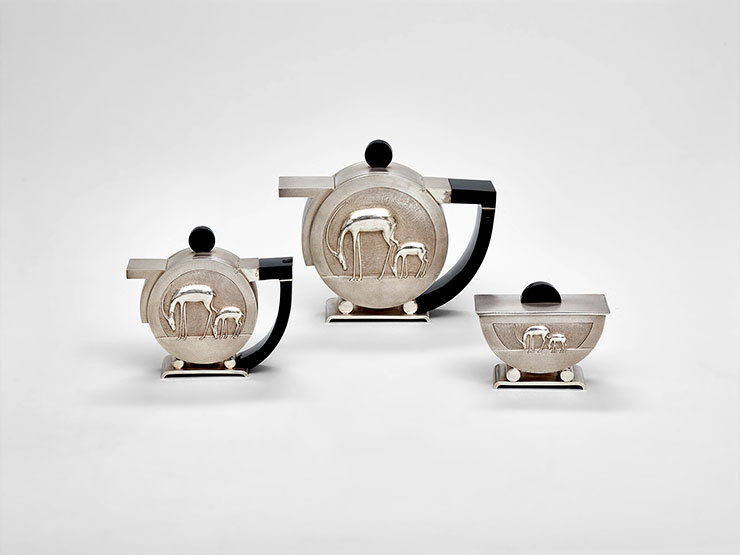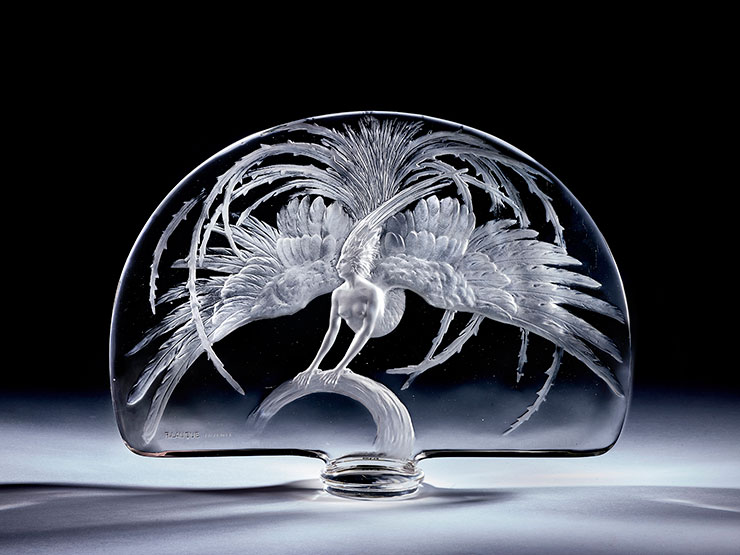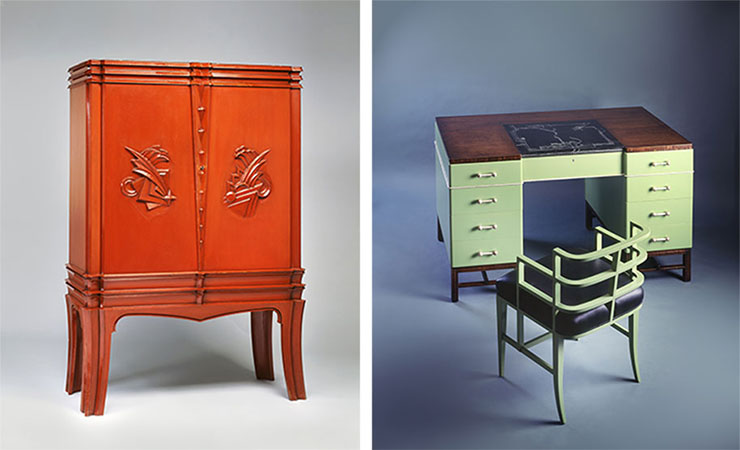
The Wolfsonian Museum is a neighborhood gem that’s so easily accessed you may be lulled into thinking you can go anytime and, thanks to a cram-packed life and lack of follow through, perhaps you don’t wrangle yourself to attend as often as you might.
On Friday, Oct. 19, an exhibition begins that should require mandatory attendance in order to be fully versed in the wonders of what made South Beach catapult into its current world renown iteration. A panoply of more than 100 examples of the Deco genre will be exhibited from the Wolfsonian’s comprehensive collection. The extended run will be punctuated by talks, tours and events to better understand an era of architecture and design that has remained attractive to a world population for close to a century.
In 1925 the Exposition Internationale des Arts Décoratifs et Industriels Modernes in Paris begat the love affair with a modern approach to design melding our new industrial world with the fine arts utilizing a variety of past movements and historical eras, becoming wildly popular in the journey.
I queried Wolfsonian-FIU curators Silvia Barisione and Shoshana Resnikoff (co-curators of Deco: Luxury to Mass Market) to extrapolate the exhibition’s true purpose.
(Whitney Richardson, now at the Asheville Art Museum is co-organizer of Deco: Luxury to Mass Market.)
Irene Sperber: The Wolfsonian–FIU has an extensive collection from the Deco era. How did curators determine the approach to this exhibition? What was the ultimate thematic flow chosen and for what reason?

Silvia Barisione: “The exhibition presents a selection of Art Deco objects from the Wolfsonian collection and gives an overview of the spread of this new aesthetic which was first celebrated at the 1925 Paris Exposition Internationale des arts décoratifs et industriels modernes. In the context of our collection, Deco intends to show how a style which has always been associated with France had so many variants all over Europe. For this reason, we selected some French pieces, but we decided to show also the different outcomes of Art Deco in countries such as Germany, Italy, The Netherlands, Great Britain, and Switzerland, among others. Through familiar and unfamiliar dimensions of Art Deco, the exhibition will explain how this style — which emphasized surface ornament, symmetry, and stylization — took inspiration from many sources: local and historic traditions, exotic cultures, abstract geometry, and nature. Its final outcome in the United States saw the impact of the machine age aesthetic conveyed in Deco by streamlined objects and furniture that will connect the visitor to the Art Deco architecture of Miami Beach.”
IS: Do the exhibited pieces favor any specific designers or design, or is this exhibition more an overview in nature?
SB: “The exhibition gives an overview to contextualize Art Deco in this area of Miami Beach, which is the Art Deco historic district par excellence. We really want to show the different outcomes of this style through known and unknown designers. Deco will give a taste of the different European variants and a wider overview of the evolution of the style in the U.S. from the European immigrant designers to the Tropical Florida House at the 1933 Chicago World’s Fair.”
IS: The title Deco: Luxury to Mass Market suggests the show will feature both highbrow and lowbrow designs. Are there certain pieces we should be aware of that indicate the significance of these disparate economic articles? Are the more modest pieces often equally as stylistically important as the more glamorous pieces?
Shoshana Resnikoff: "The show charts the development of Art Deco from Europe to the United States, and that transition definitely has an economic aspect to it. We’re not arguing that all manifestations of European Art Deco were luxury-driven, but overall it spoke to a wealthy class looking for a “new style.” One piece that really exemplifies this is a vase, titled Mappemonde [Globe] — made by Sèvres, the French national porcelain factory, it is one of only two ever produced. In the United States, meanwhile, Art Deco had a very different trajectory. Coming out of the Great Depression and inspired by uniquely American motifs like the skyscraper, industrial designers used reduced ornamentation and cheaper materials to make stylish appliances and homewares. This also marks the point at which major corporations and manufacturers partner with famous industrial designers, such as Norman Bel Geddes and Henry Dreyfuss, to make their mass-produced goods more appealing to consumers. You can see the impact of the designer/manufacturer relationship in the RCA Victor Special, model M, designed by John Vassos for RCA. Again, Art Deco in the United States isn’t strictly mass-market the same way that European Art Deco isn’t strictly luxury, but the focus and energy of the movement shifts from one continent to the other.”

Since we stumble about our neighborhood of historically pivotal Art Deco architecture every day on South Beach, this exhibition allows a moment to stop for a brief second and again appreciate the visuals of daily life, a life that gets lost in the rush of activities that compile our existence as sentient beings. We may be reminded of things we already know or perhaps experience with a fresh eye.
The 1927 Mediterranean Revival museum building was for many years home to the Washington Storage Company. Awash in unique architectural features, the carved sandstone frieze above the entrance gazes out at the stainless steel Art Deco Bridge Tender House (from Northwest 27th Avenue Bridge) lounging on the sidewalk. The lobby is graced with a glorious gilded marquee from the Norris Theater, Norristown, Pa.
Director Tim Rodgers will give a series of Director’s Talks relating the exhibitions to a variety of topics. "Skin Deep: Deco and Death" is the first in the Director’s Talks series on Thursday, Oct. 11 from 7 too 9 p.m. which deals with the health problems inherent in this era of indulgence. Fun Fact: Radium poisoning was from painting numbers on watch dials. It’s an eye opener. Stay tuned for additional scintillating talks as the season moves along.
The Wolfsonian-FIU
1001 Washington Avenue
Miami Beach, 33139
https://www.wolfsonian.orgStuff to do:
- There is a free public tour every Friday at 6 p.m.
- Sketching in the Galleries: Friday, Oct. 26, 7–8:30 p.m.
- Several other exhibitions are showing concurrently: https://www.wolfsonian.org/whats-on/exhibitions+installations/
Facts:
The Wolfsonian houses over 180,000 objects and is considered one of the largest university collections in the country. Opening in 1995, The Wolfsonian became part of Florida International University in1997. Named after it’s founder, Mitchell Wolfson Jr’s collection educates a wide range of students and residents. A Miami Beach native, Wolfson also founded the The Wolfsoniana Museum in Genoa, Italy.
 MAIN MENU
MAIN MENU

